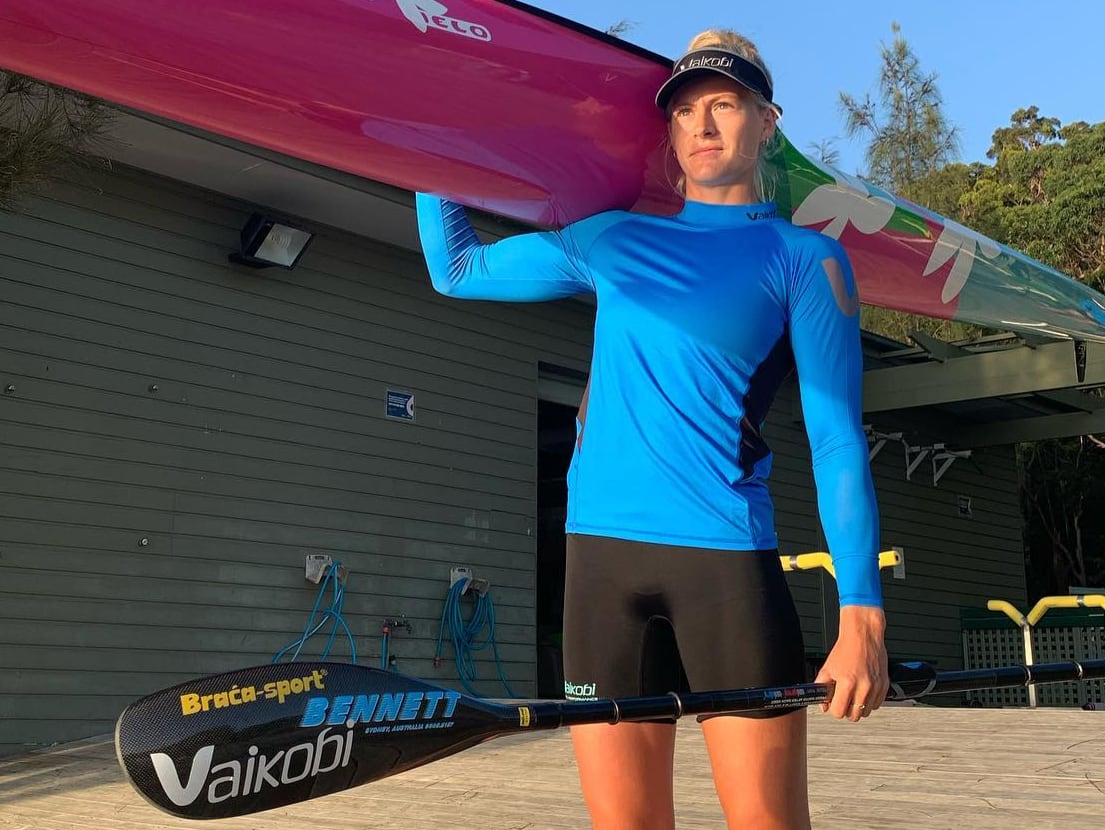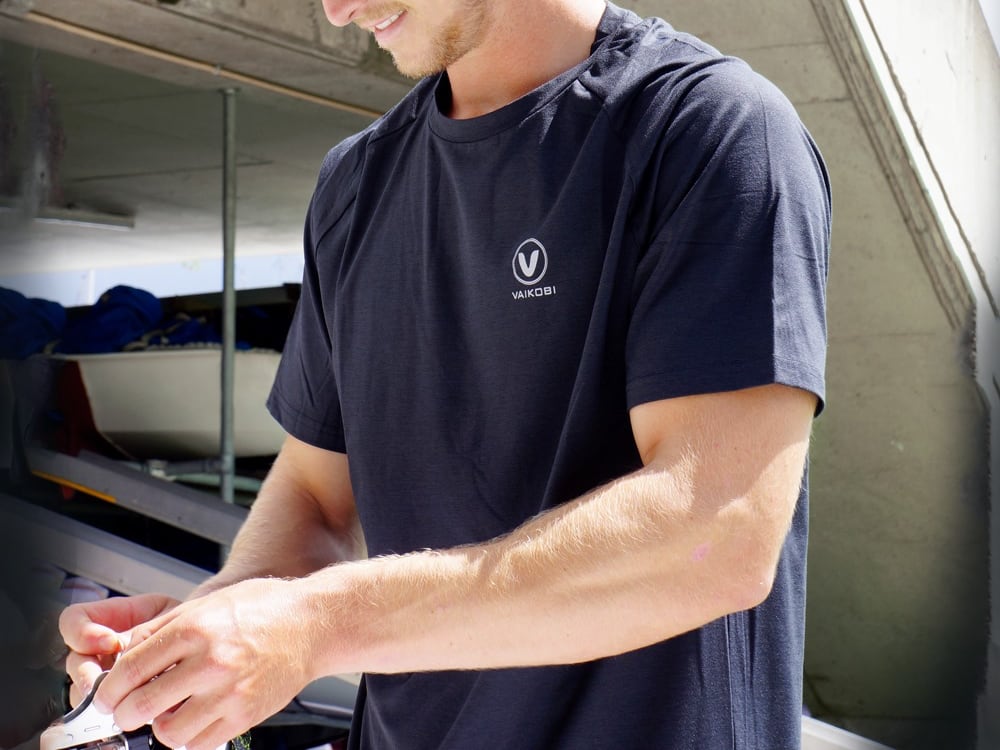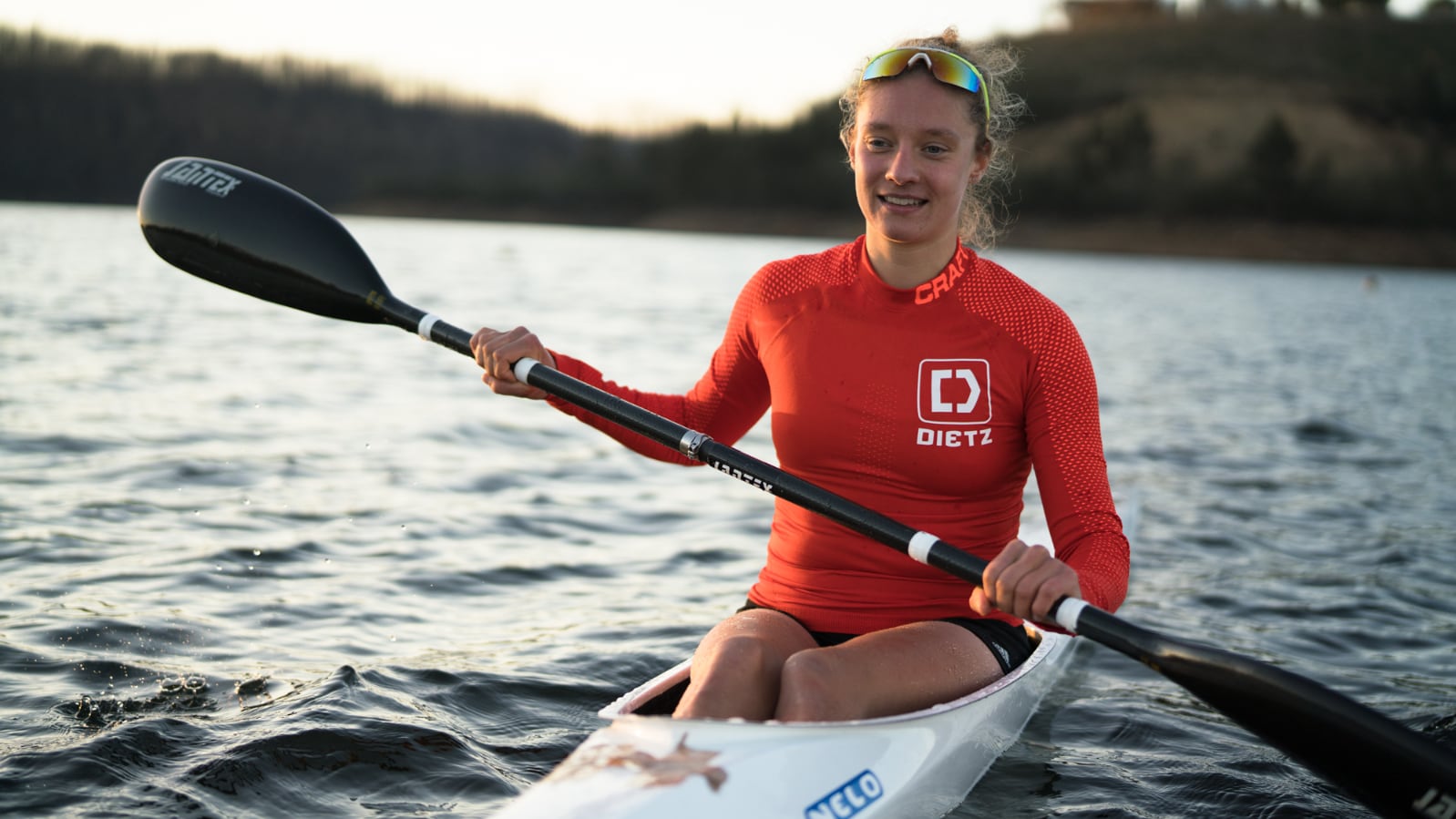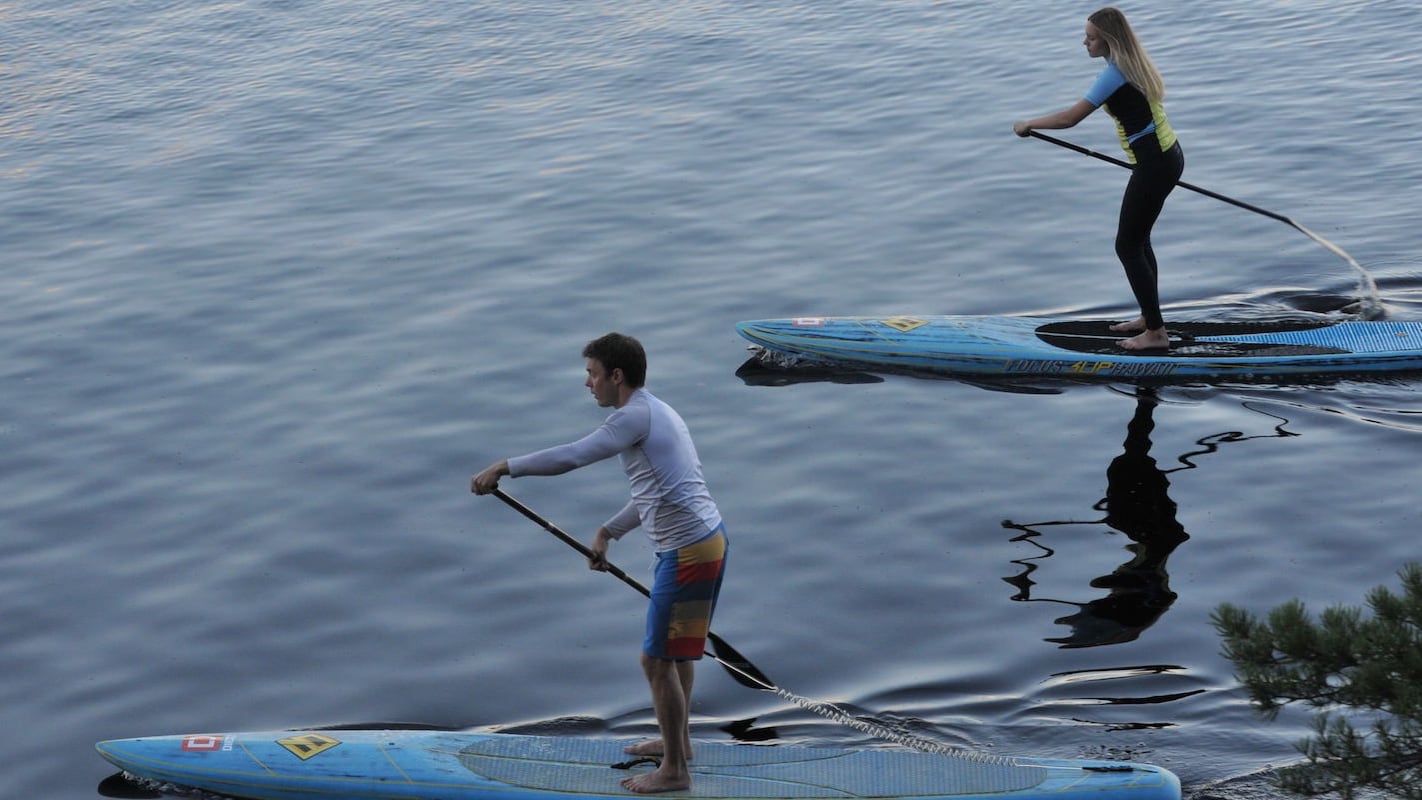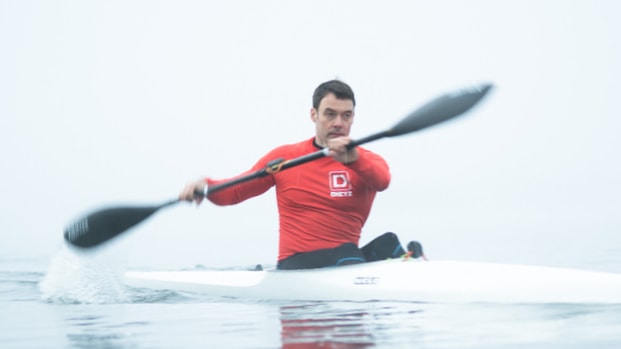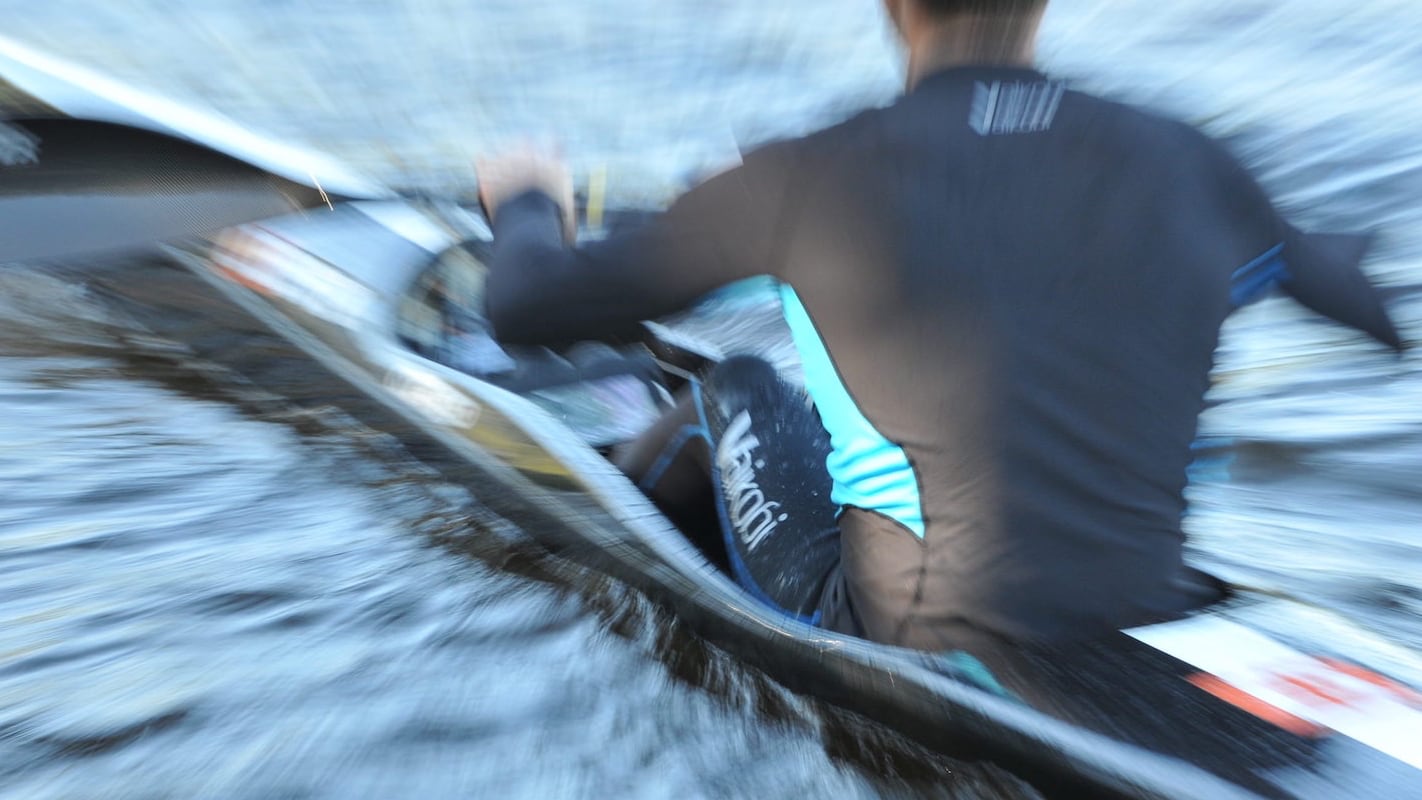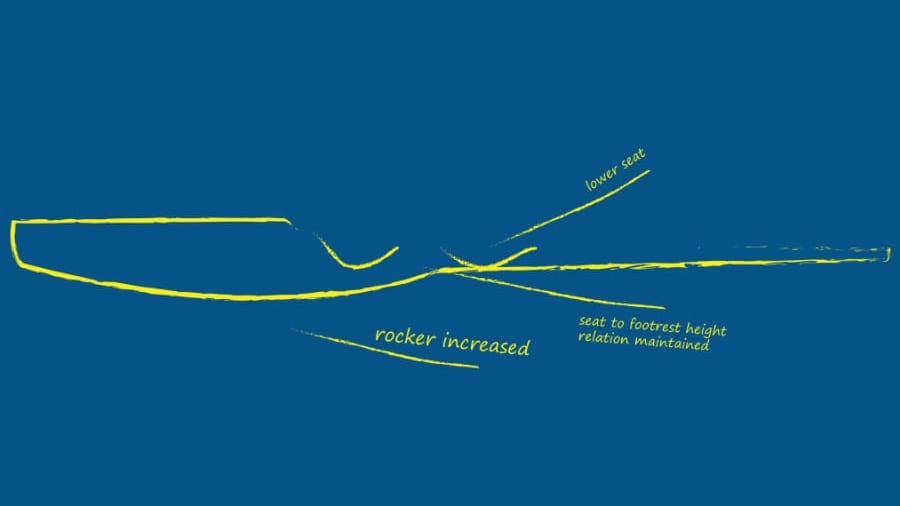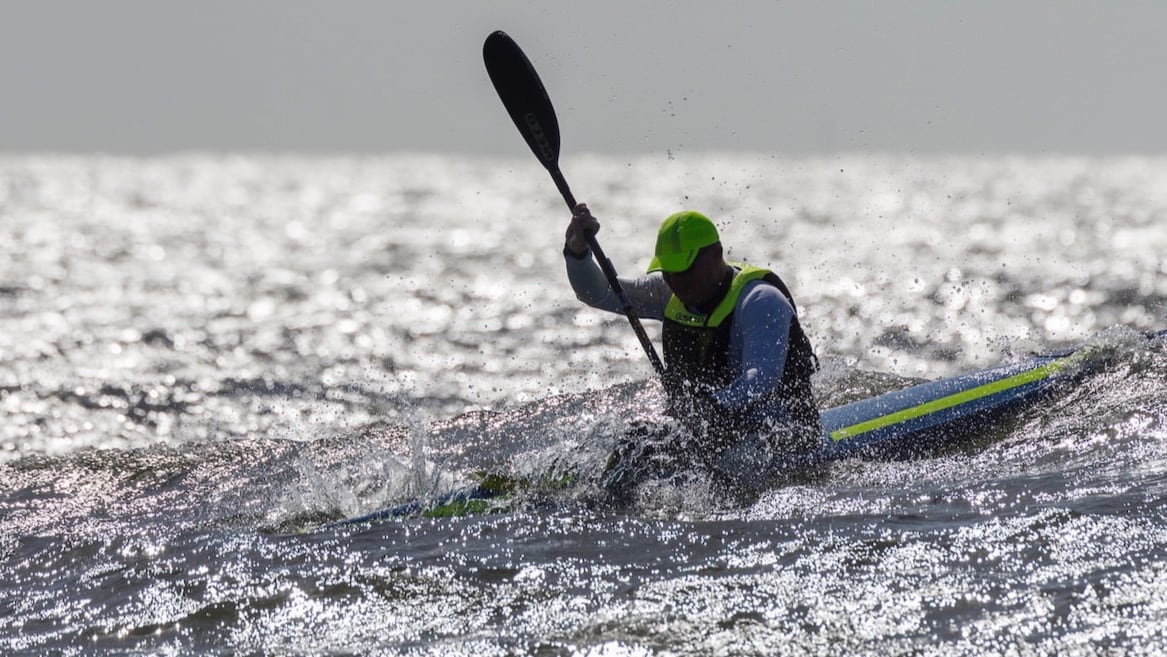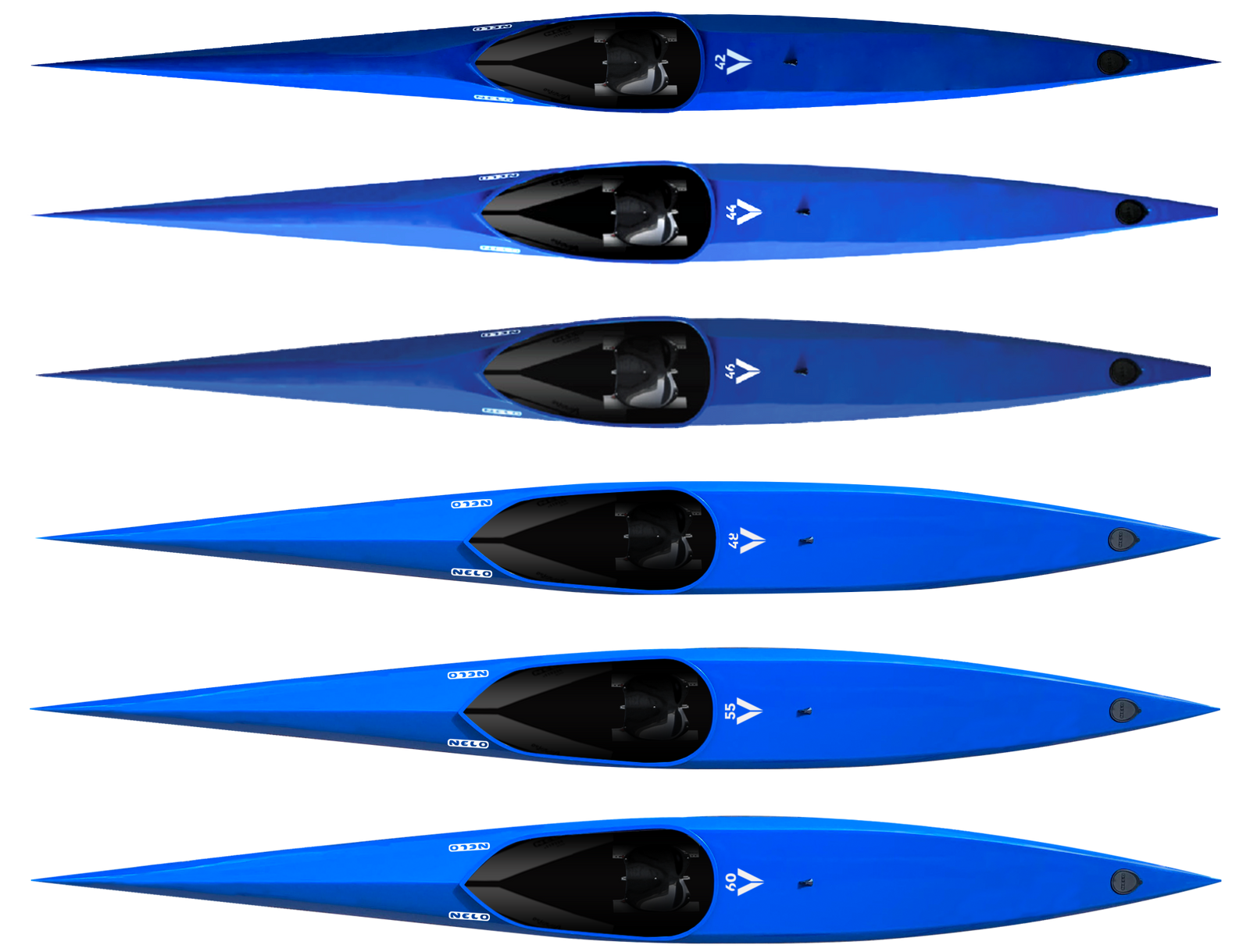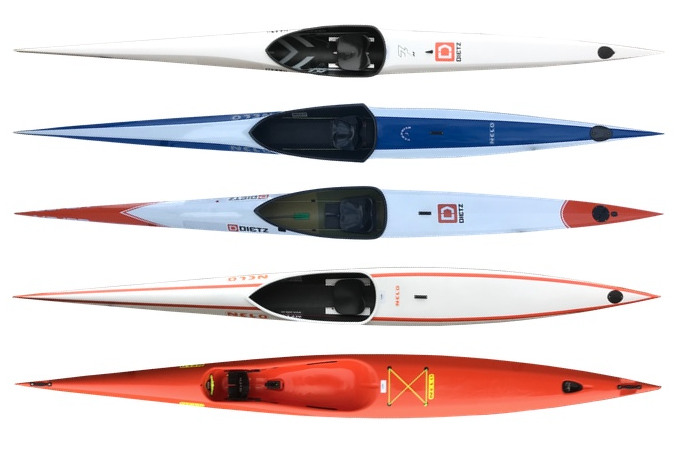
Calculate the length of your wing paddle
When faced with buying a winged paddle, length is as crucial as blade size and shape. Finding the right balance between all these factors can feel like a jungle at first. But if you figure out which factors are involved, you'll have a much clearer picture in no time. The length of the paddle is one of the most important factors. Information on other characteristics that are important to know before buying a paddle can be found here in our guide to wing paddles.
The best formula to calculate the correct length for a racing kayak paddle is:
(252 + body length in cm) ÷ 2 = paddle length in cm
Feel free to check with our paddle calculator at the end of this article to see if this formula matches the calculator's result. Because there are always a few more factors than body size that need to be included to calculate the optimal paddle length.

Can I have the same paddle length for different kayaks or surfskis?
Your optimal paddle length depends on what boat you paddle, how you paddle and whois paddling.
What boat are you paddling?
- Surfski
- Racing kayak
- Fitness kayak
- Sea kayak
For racing and fitness boats kayaks, the paddle length is about the same, for wide touring/fitness boats you can take the paddle slightly longer. If you raise or lower the seat in the racing kayak, it will affect the paddle length about 2 cm (equal to 1 cm per paddle side) with every centimeter you move the seat in height. In a surfski, you choose a paddle length between 4 - 6 cm shorter than in a racing kayak.
In principle, you can use the same paddle for kayaking and surf skiing if you have a paddle that can be extended enough. Most wing paddles have joints that can be adjusted 10 cm in length. However, if you are paddling a fast racing kayak and want to use the same paddle in a surfski (or sea kayak), you will probably want a slightly smaller blade size for ocean paddling.
How you paddle
- Steep paddle technique - racing & fitness kayak
- Flatter paddle technique - sea kayak
- Mixed paddle technique - surf ski
A steep paddling technique primarily means a higher pushing hand when paddling. A steeper technique generally requires a slightly shorter paddle than paddling with a lower technique and the same seat height.
A steep technique is what is aimed for when both the kayak and stability allow it. The pushing hand is then at the height of the eyes or forehead. A flatter technique is automatically obtained in a wider sea kayak or surfski (where the paddling style is further out from the center of the kayak) and when paddling with a lower pushing hand (i.e. at chest to shoulder height), which makes the paddling more relaxed on longer trips in a sea kayak and more stable when, for example, paddling a surfski in larger waves.
Who paddles
The length of your body will obviously affect the length of your paddle the most. It can be added that the paddle can be chosen slightly longer if you have a long upper body in relation to your height.
Selecting too short a paddle means that the range per paddle stroke is reduced. If you have too long a paddle, the angle of the paddle will be lower at entry. The power vector of the paddle stroke is shifted downwards (read: the paddle pushes even down instead of only backwards). Thus, the ideal paddle length is primarily determined by the paddle angle at insertion and becomes a sweet spot between long reach and an optimal force vector.

How do I calculate my paddle length?
Some years ago we have developed a simple formula to determine the paddle length quite accurately. If you use the formula, you are guaranteed to get a length that works for you. The formula has been published both in articles on the Swedish canoe federation's website and on various other websites. You’re welcome to use and publish this formula. But please set a reference to this site as it’s origin.
The correct paddle length in a racing kayak is calculated as:
paddle length = (body length + 252)/2
For surfskis, subtract about 6 cm. This gives the exact length +/- 2 cm. For paddlers who are between 170 and 190 cm tall, this formula works almost exactly. For shorter and taller paddlers, the result may be slightly too long. Therefore, we have now launched a calculator for your optimal paddle length with a more advanced formula.


